Lake, pond or riverfront property? Give it an earth-friendly beauty boost with the shoreline landscaping idea that best matches your waterside spot.
7 Shoreline Landscaping Design Ideas for Your Cabin
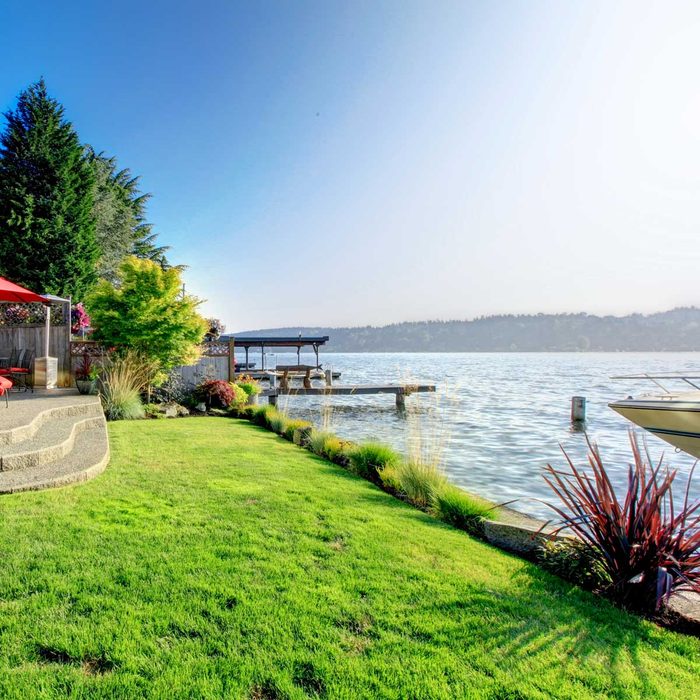
Shoreline Landscaping Design Considerations
Landscaping a waterside residence has its challenges, but it also offers some great possibilities.
Here are three key things to keep in mind:
- Ground(ing) considerations. The ground near waterways can be problematic. Low spots may retain excess water, while shale, stone or sand are more common the closer you get to the waterside. That can make planting, and keeping plants healthy, difficult.
- Focus on the view. On the bright side, you’re almost certainly working with an attractive view, which means you can show it at its best by framing it with your landscaping. Just make sure that landscaping does not end up distracting from the view of the water. Use shorter plants in front with taller plants to the sides of your primary view. And stick with colors and textures that blend in with the environment — with plants and structures.
- Consider water quality. This is vital: Lake associations often encourage property owners to create a shoreline buffer zone between their house, lawn and the shore. That’s because rain washing off a lawn or driveway can directly impact the water quality of the lake. A buffer zone filled with the right plants can filter out pollutants and soak up excess stormwater. Plants can serve as a living floodplain along a stream or river, too, absorbing water that overflows after heavy rainfalls or snow melts and can reduce erosion.
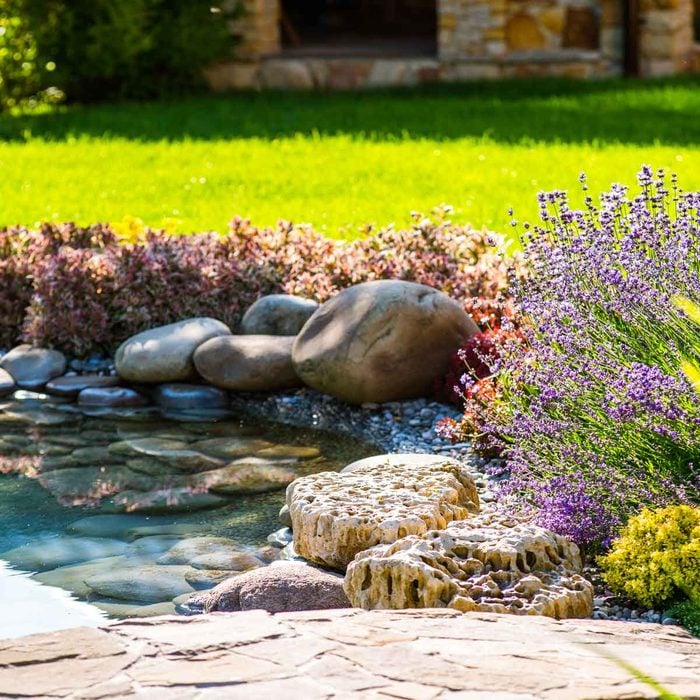
Shoreline Rain Garden
One of the best buffers is called a rain garden. It looks like a typical flower garden, but it’s positioned to catch the runoff from impervious surfaces like a driveway, sidewalk or patio before it reaches the shoreline.
To make a rain garden, dig out a shallow bed, then plant with water-loving plants that will filter the water and let it percolate slowly into the surrounding soil.
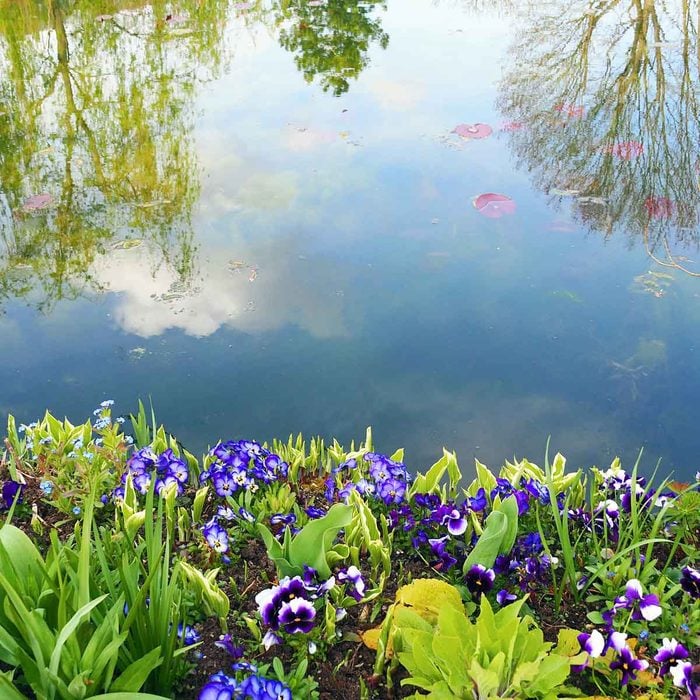
Shoreline Flowers and Grasses
A naturalistic garden of perennial flowers and grasses also makes a great buffer. It not only serves the purpose filtering rainwater, it adds another dimension of beauty to your yard with color, texture and movement. Plus, you can create a habitat for pollinators and songbirds.
Select plants that are native to your area and match the plants with the conditions. For example, put water-loving plants such as iris, canna, swamp sunflower, ligularia and cardinal flower closer to the water or in low spots to retain moisture. Drought-tolerant plants such as coneflower, rudbeckia, lavender, California poppy and many ornamental grasses go in high spots or where the ground is rocky or sandy.
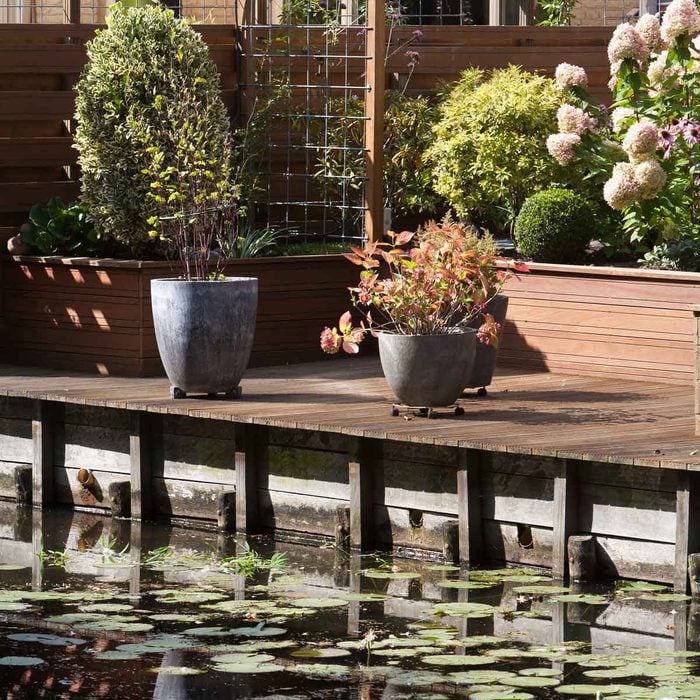
Shoreline Containers
Really poor soil? A rocky shoreline can be impossible to plant and maintain. So, containers to the rescue! Make them large so they can visually stand up to the natural scenery.
One option is to fill half wine barrels with a soil mix containing fertilizer and moisture-holding crystals to maximize water retention. Then, select plants that have built-in drought tolerance so you’re not constantly watering. Some flowers that should work well are geraniums, dusty miller, portulaca, sedum, Russian sage and small ornamental grasses like ‘Elijah Blue’ fescue.
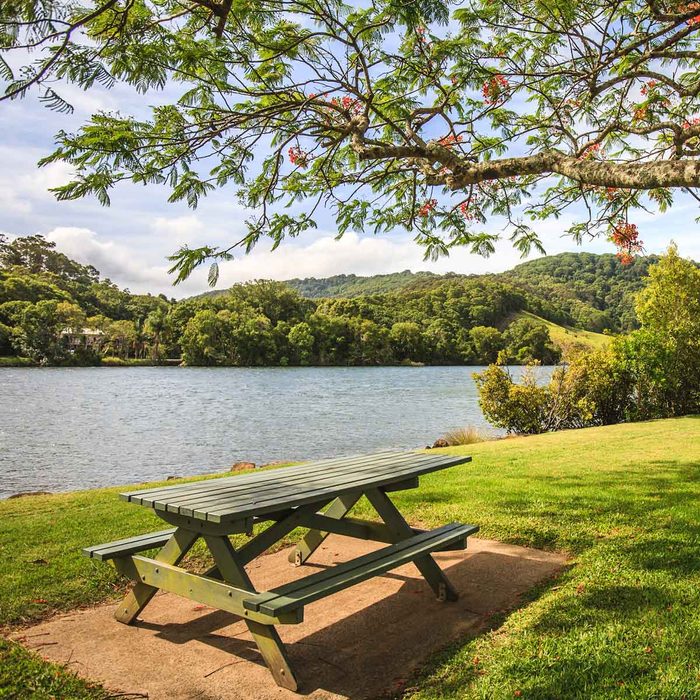
Shoreline Lawn Grass
This is a big one. If you live by water, you need to throw out all of your preconceptions about what a lawn should look like. Forget the four-step lawn care programs, the pesticides, the herbicides and the fertilizers. You’re close to the water and some of those chemicals are bound to end up where they shouldn’t.
When you live by water, a perfect lawn is one that doesn’t pollute. You can weed by hand, spot treat with 10 percent vinegar solution or apply natural corn gluten in the spring to keep weeds from sprouting.
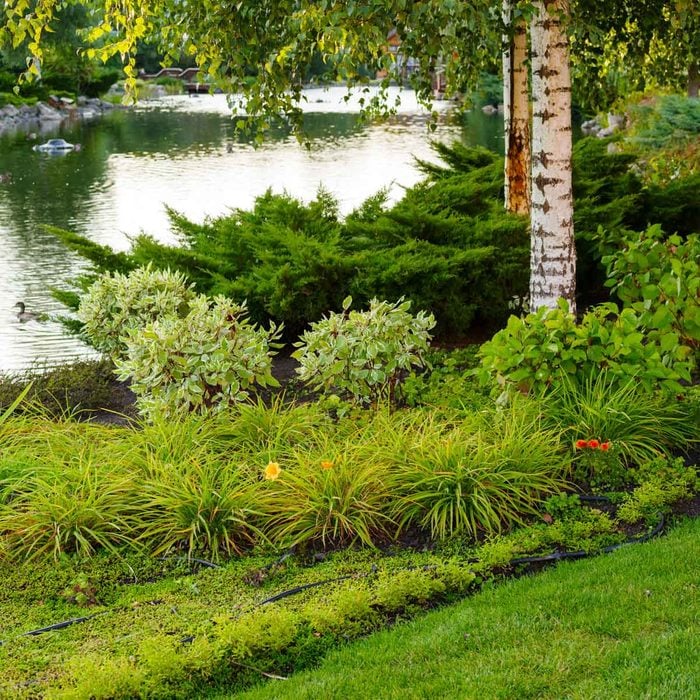
Shoreline Stabilization
Native trees, shrubs and low vegetation aren’t just attractive — they soak up stormwater runoff and catch sediment before it reaches the water. More importantly, their root systems help stabilize soil and reduce erosion. Include shrubs with berries to attract songbirds and flowers to attract butterflies. Be sure to plant trees, especially hardwoods, which have deeper and stronger roots.
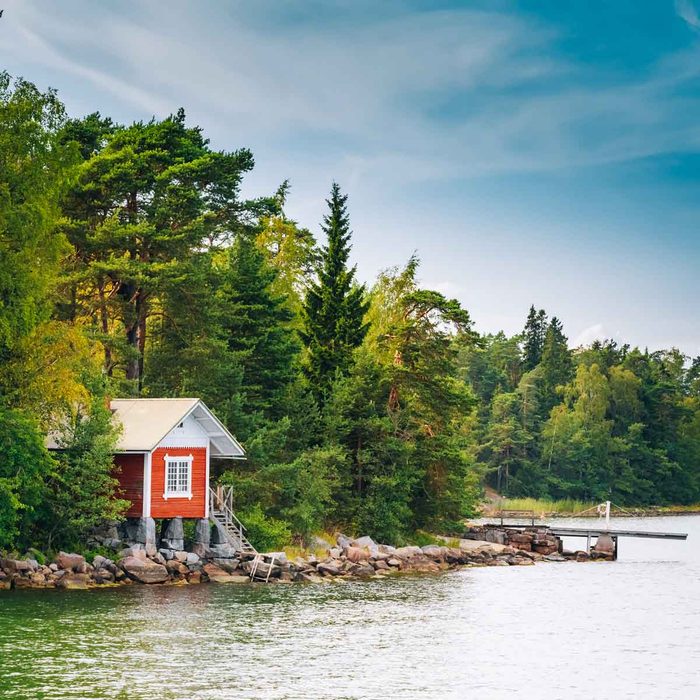
Shoreline Hardscaping
Remember those impermeable surfaces that contribute to storm runoff? You can help mitigate that problem by using stone or brick walkways instead of concrete.
Rather than an asphalt or concrete driveway, substitute gravel or stone. Use wooden planks for decks and patios, with sand or gravel spread underneath to catch rain that drips through the gaps. You could even have a “living” driveway where grass is allowed to grow in the large gaps of precast concrete frames.
While retaining walls remain popular with homeowners who want a flat lawn, they require a permit and are considered a last resort because they deter from the natural look and do nothing for filtering runoff. Instead, experts recommend a more natural-looking approach to erosion control using riprap (stones and rocks) or regrading the shoreline and planting trees, shrubs and other plants.
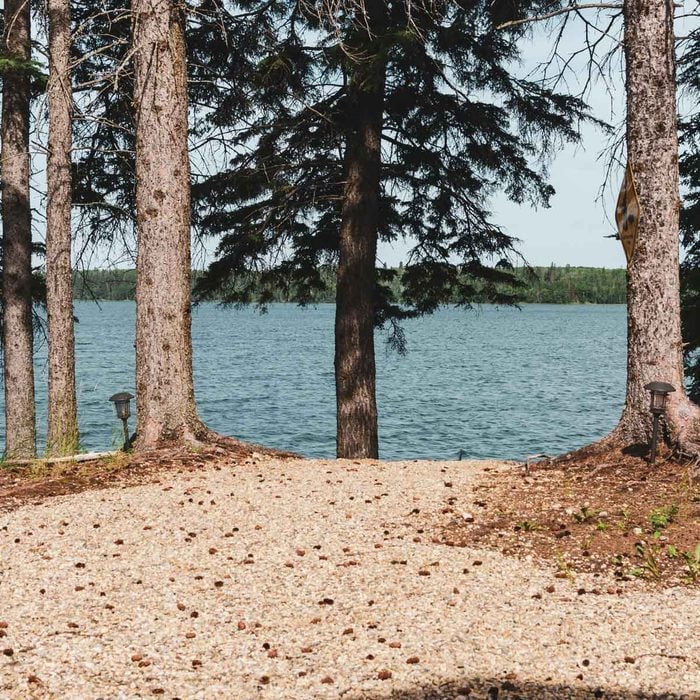
Shoreline Mulching
Mulching ties a landscape together visually and gives it a finished look, but it serves a practical purpose, too. Mulch keeps soil from drying out and cracking, conserves moisture, smothers weeds and reduces erosion caused by wind.
For shoreline mulching, stones or crushed gravel look the most natural and will be pretty much permanent. Wood chips and pine needles are great around trees and shrubs, while cocoa shells look good in flower beds.



















